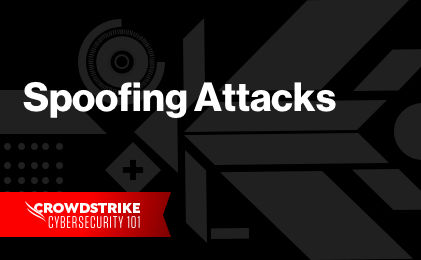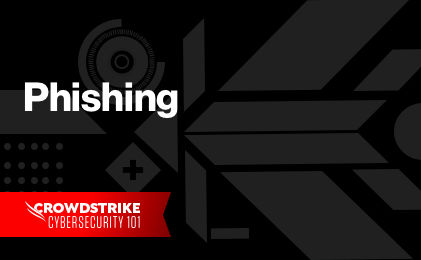Remaining vigilant against cybersecurity threats such as phishing and spoofing attacks is crucial — no one is immune. Phishing and spoofing attacks are similar, but they are two distinct cybersecurity threats. Understanding the difference between phishing and spoofing and the dangers they pose can boost your cybersecurity awareness and help you protect your business.
Spoofing vs Phishing
Spoofing attacks resemble identity theft while phishing attacks attempt to steal sensitive information. Notably, a phishing attempt may begin with a spoofing attack. Phishing, however, is never part of spoofing.
Definition of Spoofing
In spoofing attacks, threat actors disguise themselves as legitimate sources to gain the victim’s trust. The intention behind a spoofing attack is to install malware and orchestrate further crimes with the information or access gained. Spoofing attacks can take many forms, including the following:
- Email spoofing: The attacker creates an email address resembling that of a trusted sender by altering the “from” field to match a trusted contact or mimicking the name and email address of a known contact.
- Domain or website spoofing: An attacker creates a fake website or email domain designed to impersonate a known business or person.
- IP spoofing: Attackers alter their IP address in order to hide their real identity or impersonate another user via IP spoofing.
- GPS spoofing: An attacker alters a device’s GPS to register in a location different from the user’s actual physical location.
- Caller ID spoofing: The attacker disguises their phone number with one that is familiar to the victim, similar to the method in email spoofing.
Definition of Phishing
A phishing attack is a scam in which a threat actor sends generic messages in mass quantities, usually via email, in hopes of getting anyone to click on malicious links. The intent is usually to steal credentials or personal information, such as your social security number. Four of the most common types of phishing attacks are outlined below.
- Spear phishing: This phishing attempt targets specific individuals or organizations with personal communication, typically through malicious emails, with the intent to steal sensitive information.
- Whale phishing: A whaling attack is a social engineering attack specifically targeting senior or C-level executives in an attempt to steal money or information or gain access to the victim’s computer in order to execute further cyberattacks.
- Voice phishing (vishing): Vishing is a phishing attack conducted by telephone.
- SMS phishing (smishing): Smishing refers to phishing scams conducted through SMS messages, usually with the goal of luring the user to visit a website that entices them to download malicious apps or content.
Differences Between Spoofing and Phishing
It’s easy to see that spoofing attacks and phishing attacks are related yet distinct cybersecurity threats. Further examining the characteristics of each threat clarifies their differences.
- Purpose: The goal of spoofing is to impersonate someone’s identity while the purpose of phishing attacks is to steal information.
- Nature: Spoofing is not considered fraud because the victim’s email address or phone number are not stolen but rather imitated. Phishing scams are fraud because they involve information theft.
- Method: Malicious software is installed on the victim’s computer in a spoofing attack. Phishing attacks are conducted using social engineering techniques.
Learn More
One of the most effective ways to protect against phishing is to teach people how to spot an attempt and why they must report it to the right people. In this blog, learn about phishing threats and the best practices for tackling this persistent problem.
Dangers of Spoofing and Phishing
The dangers of spoofing and phishing are vast. At minimum they’re inconvenient, and at their worst, they result in financial loss and other damage. Familiarizing yourself with the risks of spoofing and phishing is a critical step in taking these cybersecurity threats seriously.
Risks of Spoofing and Phishing
Cyberattacks such as spoofing and phishing typically come with similar intentions, and they target a range of victims from individual users to corporations of all sizes or even governments. Both attacks aim to steal personal information or account credentials, extort money, install malware or simply cause disruptions. When targeting businesses or other organizations, the threat actor’s goal is usually to access sensitive and valuable company resources, such as intellectual property, customer data or payment details.
From a business perspective, securing your organization’s digital assets has the obvious benefit of a reduced risk of loss, theft or destruction. Additionally, it minimizes the likelihood of losing control of company systems or information — and having to pay a ransom to regain control. In preventing or quickly remediating cyberattacks, the organization also minimizes potential negative effects on business operations.
Relative Dangers of Spoofing and Phishing
Some spoofing and phishing attacks are more dangerous than others. Outlandish attacks are easy to spot, but others are savvier. For example, spear-phishing attacks are especially dangerous and more likely to deceive potential victims due to their personal nature. Recognizing how phishing scams and spoofing work together can help you spot cybersecurity attacks that double down with complex techniques. Phishing attacks that include spoofing pose some of the most dangerous threats.
How to Prevent and Address Spoofing
Protecting yourself from spoofing attempts is integral to responsible online behavior. In many cases spoofing attacks are easy to detect and prevent through cybersecurity awareness. Follow these tips on what to do and what not to do to protect yourself from spoofing:
- Do log into accounts through new browser tabs or official apps.
- Do use a password manager.
- Do use a spam filter for email security.
- Do invest in cybersecurity software.
- Do confirm if unexpected phone numbers or email addresses have been associated with scams.
- Do enable two-way authentication whenever possible.
- Do not click on unsolicited links.
- Do not download unexpected attachments.
- Do not share personal information.
- Do not access URLs that don’t begin with HTTPS.
- Do not log into accounts through links in emails or text messages.
If you suspect you’ve received a spoofed email, verify the message’s validity by contacting the sender using another mode of communication; do not reply to the suspicious email. Remain aware of any further damage and take steps to secure your personal information.
How to Prevent and Address Phishing
Minimizing the risk of phishing attacks is crucial to your organization’s cybersecurity strategy. Conduct security awareness training with employees to ensure they know how to identify and report suspected phishing attacks. Below are a few simple strategies to help defend against the many types of phishing:
- Use antivirus software: Antimalware tools scan devices to prevent, detect and remove malware that enter the system through a phishing scam.
- Use an antispam filter: Antispam filters automatically move phishing emails to your junk folder.
- Update browsers and software: Running the latest version of a web browser, app or other software ensures you have the best defense against the latest phishing attacks.
- Activate multifactor authentication (MFA): Even if your credentials have been compromised in a phishing attack, this extra authentication provides an extra layer of defense, and threat actors won’t necessarily be able to access your personal information.
- Do not open and do not reply: Ignore spam emails! Delete them without opening. Responding to phishing emails prompts threat actors to retarget you.
- Security awareness training: Train employees to recognize and report phishing attempts. Conducting phishing simulations allows employees to practice what they learn as well.
- Validate URLs and files: Double-check links, files and senders for validity before clicking on links or downloading files.
If you experience a phishing attack, don’t panic. Simply reading a phishing email is normally not a problem. Phishing attacks require the victim to click a malicious link or download files to activate the malicious activity. Monitor your accounts and personal information and remain vigilant.
It’s impossible to prevent phishing attacks, but you can exercise caution in engaging with electronic communication and encourage your employees to do the same. If you recognize a phishing email, you also can report it to the U.S. government at phishing-report@us-cert.gov.
Learn More
As cybercrime of all kinds, and phishing, in particular, reaches new heights, it’s important for every person in your organization to be able to identify a phishing attack and play an active role in keeping the business and your customers safe. Learn more!
Proactive Defense Against Phishing and Spoofing
Implementing a proactive protection strategy to shield yourself and your organization against cybersecurity attacks is essential. CrowdStrike’s expert team proactively hunts, investigates and advises on activity in your environment to ensure cyber threats are not missed.
Stay a step ahead of online adversaries by leveraging the latest digital technologies. The CrowdStrike Falcon® platform delivers cloud-native, next-generation endpoint protection via a single lightweight agent and offers an array of complementary prevention and detection methods. Learn more here.






